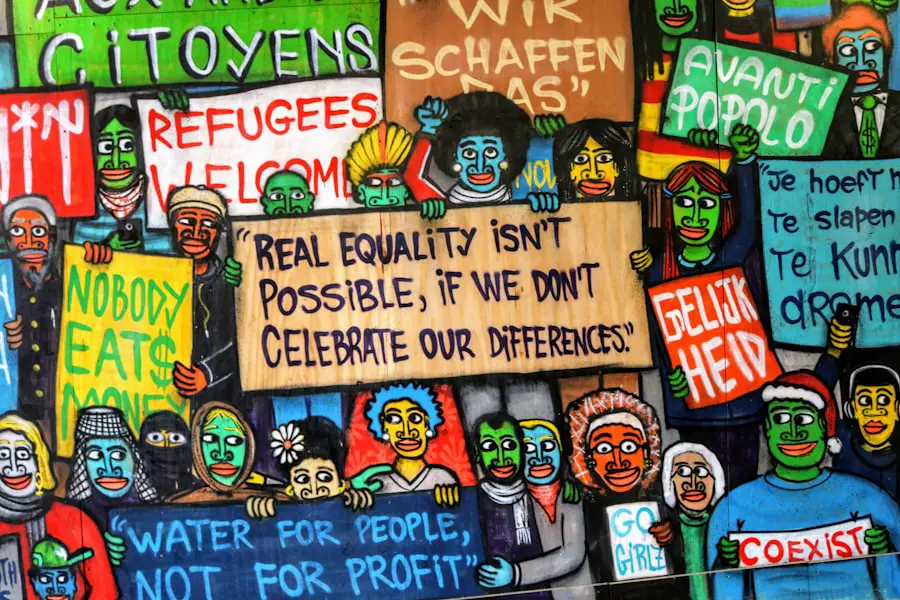The distinction between motels and hotels is often a source of confusion for travelers, yet it is essential for making informed lodging choices. At their core, motels are designed primarily for motorists, offering convenient access to parking and typically featuring exterior entrances to rooms. This design caters to guests who prioritize quick access to their vehicles, making motels a popular choice for road trips and short stays.
In contrast, hotels are generally larger establishments that provide a more comprehensive range of services and amenities. They often feature interior corridors, multiple floors, and a variety of room types, catering to a broader audience that includes business travelers, families, and tourists seeking a more immersive experience. The differences extend beyond mere architecture and layout.
Hotels often provide a higher level of service, including concierge assistance, room service, and on-site dining options. This focus on service is complemented by a wider array of amenities such as fitness centers, swimming pools, and business facilities. Motels, while they may offer basic amenities like free Wi-Fi and breakfast, typically do not match the extensive offerings found in hotels.
Understanding these distinctions can help travelers select accommodations that best suit their needs, whether they are looking for a quick overnight stop or a more luxurious getaway.
Key Takeaways
- Motels are typically designed for travelers looking for a budget-friendly, convenient place to stay for a short period, while hotels cater to a wider range of travelers and offer more amenities and services.
- Motels originated in the 1920s as a convenient stop for road travelers, while hotels have a longer history dating back to ancient times and were initially established for wealthy travelers.
- Motels often offer basic amenities such as parking, free Wi-Fi, and continental breakfast, while hotels provide a wider range of services including room service, concierge, and fitness facilities.
- Motels are usually located near highways and major roads for easy accessibility, while hotels are often situated in city centers or popular tourist destinations.
- Motels typically target budget-conscious travelers, families, and road trippers, while hotels cater to business travelers, luxury seekers, and vacationers looking for a comfortable stay.
History of Motels and Hotels
The evolution of motels and hotels reflects broader societal changes in travel and accommodation preferences. The concept of hotels dates back to ancient civilizations, with the earliest known establishments appearing in ancient Greece and Rome. These early hotels catered to travelers seeking rest and sustenance along trade routes.
The modern hotel industry began to take shape in the 18th century with the establishment of grand hotels in Europe, which offered luxurious accommodations and services to affluent travelers. The rise of the railway system in the 19th century further propelled the hotel industry, as travelers sought comfortable lodgings near train stations. Motels emerged in the United States during the early 20th century, coinciding with the rise of the automobile culture.
The first motel, the Milestone Mo-Tel, opened in San Luis Obispo, California, in 1925. This new lodging concept catered specifically to motorists, providing easy access to rooms directly from parking areas. The post-World War II era saw a boom in motel construction as families took to the highways for vacations.
Motels became synonymous with road trips and budget-friendly travel options, while hotels continued to evolve into more upscale establishments catering to a diverse clientele.
Amenities and Services

When comparing motels and hotels, one of the most significant differences lies in the amenities and services offered. Hotels typically provide a wide range of facilities designed to enhance the guest experience. For instance, many hotels feature on-site restaurants that serve breakfast, lunch, and dinner, allowing guests to enjoy meals without leaving the premises.
Additionally, hotels often include amenities such as fitness centers, spas, swimming pools, and business centers equipped with meeting rooms and technology for corporate travelers. In contrast, motels tend to focus on providing essential services that cater to transient guests. While many motels offer complimentary breakfast options—often limited to pastries, coffee, and juice—they may lack full-service dining facilities.
Some motels provide basic amenities like free Wi-Fi and vending machines but generally do not offer the extensive range of services found in hotels. This difference in amenities reflects the target audience for each type of accommodation; hotels aim to provide a comprehensive experience for guests seeking comfort and convenience, while motels prioritize affordability and accessibility for those on the go.
Location and Accessibility
| Location | Accessibility |
|---|---|
| City | Public transportation |
| Suburb | Parking facilities |
| Rural area | Proximity to highways |
Location plays a crucial role in the appeal of both motels and hotels. Hotels are often strategically situated in urban centers or tourist hotspots, providing easy access to attractions, business districts, and transportation hubs. For example, a hotel located near a major convention center can attract business travelers attending conferences or events.
Similarly, hotels near popular tourist destinations can capitalize on foot traffic from visitors seeking convenient lodging options close to attractions. Motels, on the other hand, are frequently found along highways or major roads, catering primarily to motorists. Their locations are chosen for convenience rather than proximity to attractions.
A typical motel might be situated just off an interstate exit, making it easy for travelers to stop for a night without deviating far from their route. This accessibility is particularly appealing for families on road trips or individuals seeking a quick overnight stay during long journeys. The emphasis on location reflects the differing priorities of guests at motels versus hotels; while hotel guests may seek cultural experiences or business opportunities nearby, motel guests prioritize ease of access during their travels.
Target Audience
The target audience for motels and hotels varies significantly based on their respective offerings and locations. Hotels generally attract a diverse clientele that includes business travelers, families on vacation, couples seeking romantic getaways, and tourists exploring new destinations. This broad appeal is facilitated by the range of services provided by hotels, which cater to different needs—such as conference facilities for corporate guests or family-friendly amenities like pools and play areas.
Motels primarily target budget-conscious travelers who prioritize convenience over luxury. Road trippers, truck drivers, and individuals seeking short-term accommodations are common guests at motels. The affordability of motel stays makes them an attractive option for those looking to minimize travel expenses without sacrificing basic comfort.
Additionally, motels often appeal to younger travelers or those who prefer a no-frills approach to lodging. Understanding these target audiences helps both motels and hotels tailor their marketing strategies and service offerings to meet the specific needs of their guests.
Pricing and Cost

Pricing structures between motels and hotels reflect their differing target audiences and service levels. Generally speaking, motels are positioned as budget-friendly options with lower nightly rates compared to hotels. This affordability is achieved through minimalistic designs and fewer amenities; motels often forego luxuries such as room service or extensive recreational facilities in favor of keeping costs down.
For example, a typical motel room might range from $50 to $100 per night depending on location and seasonality. Hotels tend to have a wider pricing spectrum due to their varied offerings and levels of service. Luxury hotels can command rates well above $300 per night or more based on their location and brand reputation.
Mid-range hotels may offer rooms starting at $100 but can also exceed $200 during peak travel seasons or special events. The pricing strategy for hotels often includes additional fees for services such as parking or resort fees that can further increase the overall cost of a stay. Understanding these pricing dynamics allows travelers to make informed decisions based on their budgetary constraints while considering the value offered by each type of accommodation.
Design and Architecture
The architectural styles of motels and hotels reflect their intended purposes and target audiences. Motels typically feature simple designs that prioritize functionality over aesthetics. Most motels are single or double-story buildings with exterior corridors leading directly to guest rooms.
This layout allows for easy access from parking areas but often lacks the charm or character found in more elaborate hotel designs. The focus is on providing basic accommodations that meet the needs of transient guests without unnecessary frills. Hotels often showcase more diverse architectural styles that can range from modern skyscrapers to historic buildings repurposed into boutique accommodations.
Many hotels invest in unique designs that create memorable experiences for guests; this can include grand lobbies with intricate decor or themed rooms that reflect local culture or history. The design elements in hotels are carefully curated to enhance guest comfort while also creating an inviting atmosphere that encourages relaxation or social interaction. This emphasis on design not only serves functional purposes but also plays a significant role in branding and marketing efforts aimed at attracting specific demographics.
Customer Experience
Customer experience is paramount in both motels and hotels but manifests differently based on the level of service provided. In hotels, guests often expect personalized attention from staff members who are trained to cater to various needs—from check-in assistance to concierge services that help plan activities during their stay. High-end hotels may offer additional perks such as welcome drinks or complimentary upgrades based on loyalty programs or special occasions like anniversaries or birthdays.
In contrast, customer experience at motels tends to be more straightforward due to their focus on efficiency rather than personalized service. Guests typically check in quickly at front desks with minimal interaction before heading directly to their rooms. While some motels may strive to create a welcoming atmosphere through friendly staff interactions or clean facilities, they generally do not offer the same level of tailored experiences found in hotels.
This difference highlights how customer expectations vary based on the type of accommodation chosen; hotel guests often seek memorable experiences while motel guests prioritize convenience.
Marketing and Branding
Marketing strategies for motels and hotels differ significantly due to their distinct target audiences and service offerings. Hotels often invest heavily in branding efforts that emphasize luxury, comfort, and unique experiences tailored to specific demographics—such as business travelers or families seeking vacation packages.
Motels typically adopt more straightforward marketing approaches focused on affordability and convenience. Their advertising often emphasizes low rates, easy access from highways, and essential services like free parking or breakfast options. Many motels rely on online travel agencies (OTAs) for visibility rather than developing extensive branding strategies; this allows them to reach budget-conscious travelers searching for quick lodging solutions without delving into elaborate marketing campaigns.
Sustainability and Environmental Impact
As awareness of environmental issues grows among consumers, both motels and hotels are increasingly focusing on sustainability practices within their operations. Hotels have taken significant strides toward eco-friendliness by implementing energy-efficient systems such as LED lighting, water-saving fixtures, and recycling programs aimed at reducing waste generated during guest stays. Many upscale hotel brands have adopted green certifications that showcase their commitment to sustainability while appealing to environmentally conscious travelers.
Motels face unique challenges when it comes to sustainability due to their often limited resources compared to larger hotel chains; however, some have begun adopting eco-friendly practices as well. Simple measures like offering recycling bins or using energy-efficient appliances can make a difference without requiring substantial investments in infrastructure upgrades. As consumer preferences shift toward sustainable travel options across all types of accommodations, both motels and hotels must adapt their practices accordingly to remain competitive in an evolving market landscape.
Future Trends in Lodging
The future of lodging is poised for transformation as technology continues to reshape guest expectations and industry standards across both motels and hotels alike. One emerging trend is the integration of smart technology into accommodations; features such as mobile check-in/check-out processes via smartphones or voice-activated room controls are becoming increasingly popular among tech-savvy travelers seeking convenience during their stays. Additionally, there is a growing emphasis on experiential travel that prioritizes unique local experiences over traditional lodging options alone; this trend has led some hotels to partner with local businesses or offer curated activities designed around cultural immersion opportunities for guests seeking authentic connections during their travels.
As sustainability becomes an even more pressing concern globally due to climate change impacts affecting tourism patterns worldwide—both motels and hotels will need innovative solutions aimed at reducing carbon footprints while enhancing guest experiences through eco-friendly practices that resonate with environmentally conscious consumers looking for responsible travel choices moving forward into this new era of hospitality industry evolution.
If you’re planning a spring adventure in 2025, you’ll want to make sure you have all the necessary gear, including portable water bottles. Check out this article on 5 Must-Have Portable Water Bottles for Your Spring 2025 Adventures to find the perfect one for your trip. And while you’re at it, don’t forget to pack a solar-powered camping lantern and some odor-resistant Merino wool travel socks for a comfortable and enjoyable journey.
FAQs
What is the main difference between a motel and a hotel?
The main difference between a motel and a hotel is their layout and design. Motels typically have rooms that open directly to the outside, while hotels have rooms that are accessed through interior corridors.
What are the typical characteristics of a motel?
Motels are often designed for travelers who are looking for a convenient place to stay for a short period of time. They typically have a smaller number of rooms, parking spaces located near the rooms, and are often located along highways or major roads.
What are the typical characteristics of a hotel?
Hotels are generally larger establishments that offer a wide range of amenities and services such as restaurants, bars, conference rooms, and fitness centers. They often have multiple floors and interior corridors leading to the rooms.
Do motels and hotels offer the same level of service and amenities?
Hotels typically offer a wider range of services and amenities compared to motels. This can include room service, concierge services, and more extensive dining options. Motels, on the other hand, may offer more basic amenities such as free parking and complimentary breakfast.
Are motels and hotels priced differently?
In general, hotels tend to be priced higher than motels due to the range of services and amenities they offer. Motels are often more budget-friendly and cater to travelers looking for a more affordable option for a short stay.
